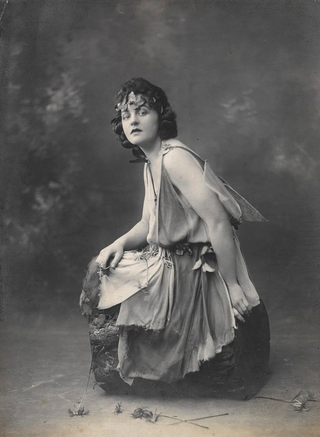Child Development
Mary Poppins' Profoundly Countercultural Secret Message
Creator P.L. Travers had some pretty radical ideas.
Posted December 31, 2018
Disney’s current sequel to one of the most recognizable children’s stories of all time has rekindled interest in a profoundly counter-cultural figure in 20th-century popular literature, the wonder-working nanny Mary Poppins. What makes Poppins so remarkable today is less the fantastic adventures on which she leads the Banks children or the many magical acts she performs – both of which pale by comparison to those of the comic-book characters who dominate today’s cinema – but the implicit purposes that lie behind them.
Mary Poppins was created by Australian P.L. Travers, whose 1934 eponymous novel introduced readers to the Banks family and their home on Cherry Tree Lane in East London. Seven additional books followed, the last one published in 1988. The 1964 release of the Disney film Mary Poppins, starring Julie Andrews, garnered a wide international audience and an Oscar for its star. A 2013 film, Saving Mr. Banks, starred Emma Thompson and chronicled the author’s tense relationship with Disney leading up to the 1964 film. This year’s sequel, Mary Poppins Returns, features Emily Blunt in the title role.

Although Travers’ Poppins is quick to disavow her supernatural powers, she displays a wealth of them. Natural laws such as gravity seem not to constrain her. She arrives and departs with the wind, apparently born aloft by her umbrella, and she can slide not only down but up a banister. She seems to be able to produce virtually anything from her carpet bag. She can communicate with other magical beings and animals, an ability which she can share with others, and she transports herself and her companions to magical places.
According to Travers, Poppins is remarkable not because she is the only human being who possesses such powers, but because she alone never lost them. All human beings enjoy such abilities as young children, she says, but they fade away in the process of growing up. While the big-screen Poppins puts her powers to a variety of practical uses, such as tidying up a room, their principal object seems to be to expand and enrich the imagination. It is the gradual erosion of this faculty, she implies, that oppresses the lives of so many older children and adults.
In fact, Travers seems to have regarded the distinction between childhood and adulthood as one that, from an imaginative point of view, is best left undrawn, writing,
"You do not chop off a section of your imaginative substance and make a book specifically for children, for – if you are honest – you have no idea where childhood ends and maturity begins. It is all endless and all one."
Poppins’ magical abilities enable her to spend her days in pursuits that ordinary mortals can only dream of. She can ride on peppermint horses, attend parties with people who live under the sea, visit animals on other planets, interact with mythical creatures, and visit the man on the moon. Such powers could, presumably, be put to many more conventional uses. She could, for example, employ them to accumulate wealth, to garner fame, or to acquire power over others. At the very least, she could spend her days socializing with the rich, famous, and powerful.
Instead, however, Poppins chooses to devote her time and talent to an otherwise largely unremarkable middle-class British family. It is evidently important to her that the Banks children be clean, neat, and polite, but she also provides the children with a guide to life, showing them the importance of kindness, responsibility, and the capacity to marvel at the world’s many wonders. In contrast to the Banks parents, who are often preoccupied with their own affairs, the children are her central concern. She wants them to become the best possible versions of themselves.
Travers believed that stories that cultivate the best in human beings play an indispensable role in the vitality of any culture, writing,
"No culture can satisfactorily move along its forward course without its myths, which are its teachings, its fundamental dealing with the truth of things, and the one reality that underlies everything."
Such myths should not only enrich the moral imaginations of children, she believed, but also impress upon human beings of all ages the importance of nourishing the imagination, above all in childhood.
Mary Poppins is such a myth, offering powerful testimony to the importance of family life and children. She could be amusing herself doing many fantastic things in many exotic places with many extraordinary people, but she chooses instead to protect and promote a family’s integrity, and above all the well-being – physical, moral, and imaginative – of its children. The subversive question at the core of the narrative is this: How would our own biographies stack up against the proposition that caring for families and especially children represents the most choice-worthy life imaginable?


